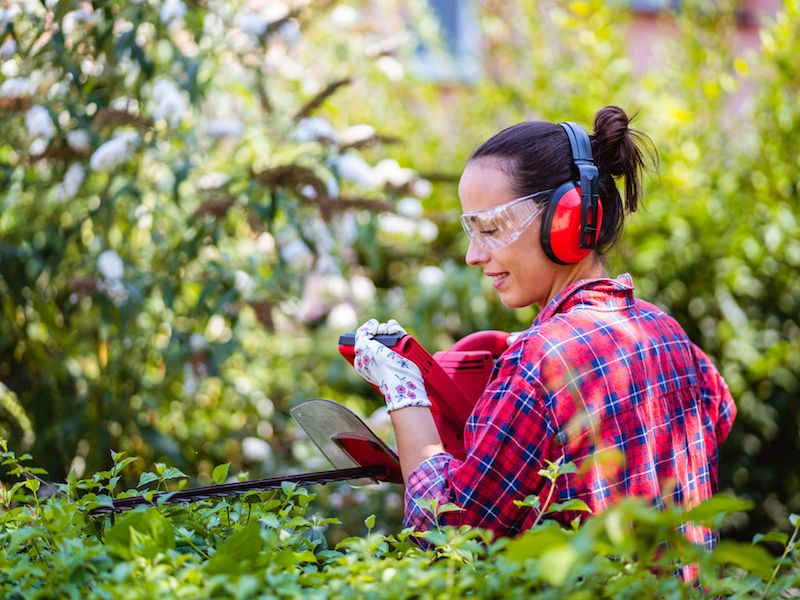
Eating right and safeguarding your hearing have some parallels. It sounds good, but not many of us have a very good concept of where to start. If there aren’t any apparent noise dangers and you don’t think your environment is very noisy, this is especially true. But your ears and senses can be stressed by daily living, so doing these hearing protection tips can help safeguard your auditory acuity.
If you want to keep enjoying the sounds around you, you should do everything you can to slow down the impairment of your hearing.
Tip 1: Ear Protection You Can Wear
Using ear protection is the most practical and simple way to safeguard your hearing. This means taking basic actions to lessen the amount of loud and damaging noises you’re subjected to.
For many people, this will mean utilizing hearing protection when it’s required. Hearing protection normally comes in two basic forms:
- Ear Muffs, which are placed over the ears.
- Ear Plugs, which are put in the ear canal.
Neither form of hearing protection is inherently better than the other. There are advantages to each type. Your choice of hearing protection should, most importantly, feel comfortable.
Tip 2: Know When Sound Gets Dangerous
But how can you tell when to wear hearing protection? We’re used to linking dangerous noise with painful noise. But in reality, sounds can start to damage your ears at a much lower volume than you might anticipate. The sounds of traffic, for example, are loud enough to start damaging your hearing after just a couple of hours. A vital step in protecting your hearing, then, is recognizing when sound becomes dangerous.
The following threshold is when sound becomes dangerous:
- 95-100 dB: This is the typical volume of your earbuds or the level of farm equipment. After about 15-20 minutes this volume of noise becomes dangerous.
- Over 100 dB: Your hearing can be very quickly injured by this. Anything above this limit can injure your hearing in minutes or seconds. For instance, rock concerts and jet engines will injure your ears in 30 seconds.
- 85 decibels (dB): After about two hours this level of sound is hazardous.Your hairdryer or a busy city street are both circumstances where you will find this volume of sound.
Tip 3: Turn Your Phone Into a Sound Meter
Now that we have a general concept of what levels of noise could be hazardous, we can take some steps to make sure we minimize our exposure. But in day to day life, it can be challenging trying to measure what is too loud and what isn’t.
Your smartphone can now be used as a handy little tool. There are dozens of apps for iPhone, Android, and everything in between that turn your device’s microphone into a sound meter.
In order to get an idea of what dangerous levels of noise really sound like, use your sound meter to confirm the decibel level of everything you are hearing.
Tip 4: Monitor Your Volume Buttons
The majority of people these days listen to music using their phone or smart device, and they normally use earbuds while they do it. Your hearing is put at risk with this setup. Your ears can be considerably damaged if you set your earbuds to high over a long period of time.
That’s why protecting your ears means keeping a focused eye on your volume management. In order to drown out sounds elsewhere, you should never increase the volume. And we recommend using apps or configurations to ensure that your volume doesn’t accidentally become dangerously high.
Earbud use can become a negative feedback loop if your hearing begins to decline; in order to compensate for your faltering hearing, you may find yourself constantly rising the volume of your earbuds, doing more damage to your ears in the process.
Tip 5: Get Your Hearing Tested
You may think that getting a hearing exam is something you do only when your hearing begins to wane. The issue is that it’s not always easy to identify a problem in your ears without a baseline to compare results to.
Scheduling a hearing screening or exam is a great way to obtain data that can be used for both treatment and diagnostic purposes, making certain that all of your future hearing (and hearing protection) choices have a little bit of added context and information.
Keep an Eye on Your Hearing
In an ideal world, protecting your ears would be something you could do constantly without any problem. But challenges are will always be there. So protect your ears when you can, as often as you can. Also, get routine hearing examinations. Hopefully, these guidelines will give you a good start.